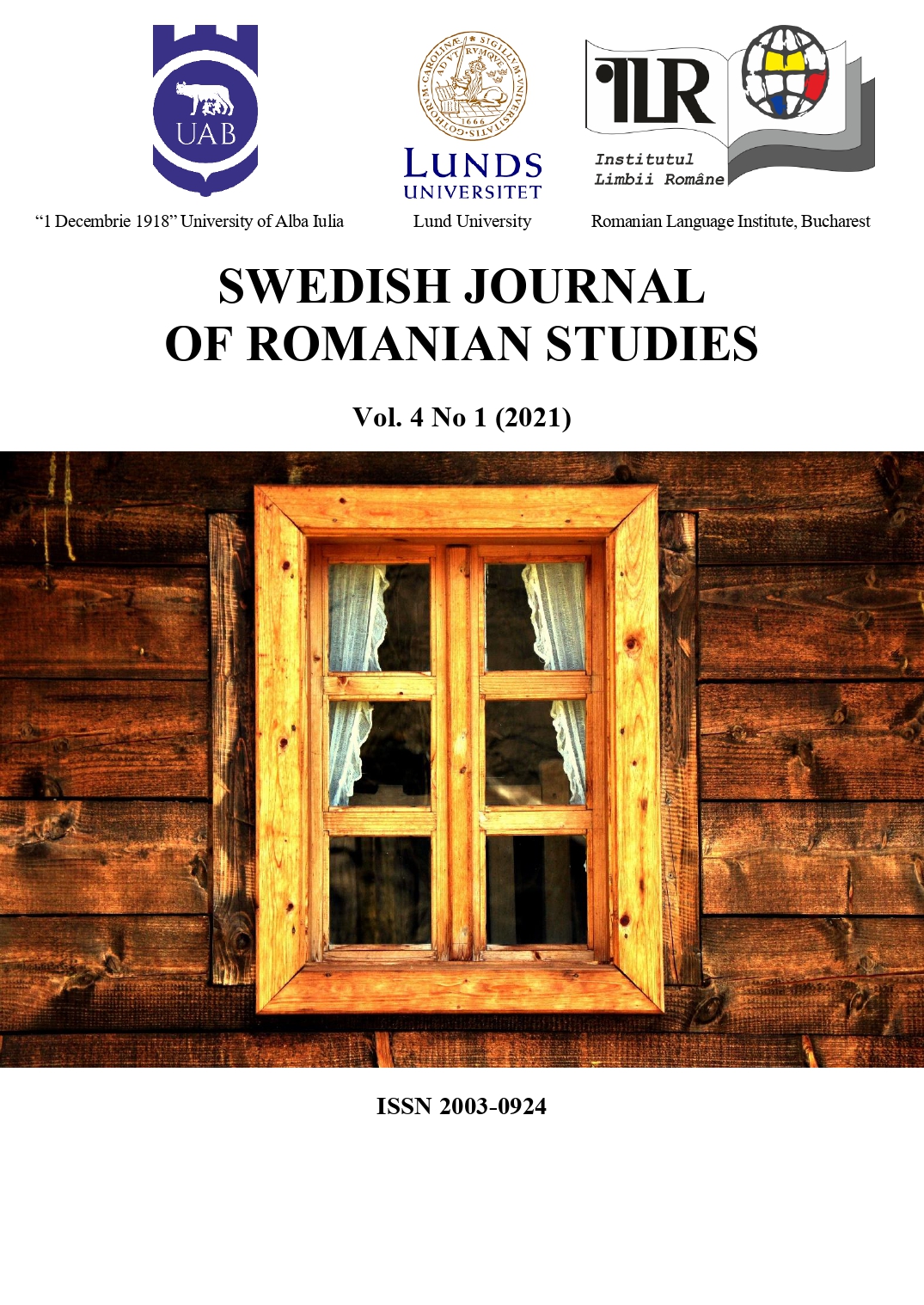Amândoi by Liviu Rebreanu: multicultural settings and sources of suspense
DOI:
https://doi.org/10.35824/sjrs.v4i1.22272Keywords:
archaisms;, detective genre;, multiculturalism;, provincial Romania;, suspense, regional wordsAbstract
The article looks into the multicultural settings of Liviu Rebreanu’s novel “Amândoi” (Both) by briefly examining the representation of its main, minor or incidental characters, either intelligentsia or common people. Ethnicity, social and professional statuses are considered as elements of multiculturalism. The continuous increase of suspense, the open ending, the parody in the undertone, and the development of the intrigue in an original multicultural context are presented further on. The various rumours arising from the townspeople’s own hypotheses about the murders of the aged Dăniloiu provide the opportunity to present the detective genre, which Rebreanu introduced in Romanian literature, suggesting a disguised satire of the type. The archaisms and the regional words of the novel are laboriously registered and underlined in terms of usage, etymology and linguistic connectivity, with the purpose of showing the multicultural flavour by means of a multilingual approach. The essay indicates that all characters use archaisms and local words, notwithstanding their social status or aspirations, a detail that puts in perspective the cultural configuration of the provincial town life, which Rebreanu is very aware of.
References
Călinescu, G. (1941). Istoria literaturii române de la origini până în prezent/ The history of the Romanian literature from its origin until present. București: Fundația regală pentru literatură și artă.
Crohmălniceanu, Ov. S. (1954). Liviu Rebreanu. București: ESPLA.
DER (1958-1966): Dicționarul etimologic roman/ The etymological Romanian dictionary. Alexandru Ciorănescu. Tenerife: Universidad de la Laguna.
DEX '09 (2009): Dicționarul explicativ al limbii române (ediția a II-a revăzută și adăugită)/ The explanatory dictionary of the Romanian language (2nd edition, revised and enlarged). București: Academia Română. Institutul de Lingvistică. Editura Univers Enciclopedic Gold.
Gogu, A. (2018). Rebreanu se înșală – Critică detectivistă și metatextualitate latentă în romanul Amândoi/ Rebreanu is wrong – detective criticism and latent metatextuality in the novel Amândoi. In Transilvania. 3/2018, 36-44.
Longley, R. (2020). What is Multiculturalism? Definition, Theories, and Examples. Available at https://www.thoughtco.com/what-is-multiculturalism-4689285, retrieved on January, 12th, 2021.
NODEX (2002): Noul dicționar explicativ al limbii române/ The new explanatory dictionary of the Romanian language. București: Editura Litera Internațional.
MDA2 (2010): Micul dicționar academic/ The small academic dictionary. Ediția a II-a. București: Academia Română. Institutul de Lingvistică, Editura Univers Enciclopedic.
OED (2021): Oxford English Dictionary. The definitive record of the English language. Oxford: Oxford University Press. https://www.oed.com/, retrieved on January, 12th, 2021.
Petraşincu, D. (1940). Un roman „poliţist“ de Liviu Rebreanu/ A “police” novel by Liviu Rebreanu. In România lite¬ra¬ră. II. 51. 31 martie 1940, 22.
Piru, Al. (1962). Prefaţă. Opere alese/ Preface. Selected Works. vol. I. București: Editura pentru literatură.
Rebreanu, L. (2016). Amândoi/ Both. București: Editura Hoffman.
Raicu, L. (1967). Liviu Rebreanu, eseu/ Liviu Rebreanu, essay. București: Editura pentru literatură.
Scriban, A. (1939). Dicționaru Limbii Românești/ The Dictionary of the Romanian language. Edițiunea întîia. Iași : Institutu de arte grafice “Presa bună”.
Streinu, V. (1968). Pagini de critică li¬terară/ Pages of literary criticism. II. București: Editura pentru literatură.
Downloads
Published
How to Cite
Issue
Section
License
Copyright (c) 2021 Lucian Vasile Bagiu

This work is licensed under a Creative Commons Attribution-NonCommercial 4.0 International License.
Authors who publish with this journal agree to the following terms:
a. Authors retain copyright and grant the journal right of first publication with the work simultaneously licensed under a Creative Commons Attribution-NonCommercial 4.0 International License that allows others to share the work with an acknowledgement of the work's authorship and initial publication in this journal.
b. Authors are able to enter into separate, additional contractual arrangements for the non-exclusive distribution of the journal's published version of the work (e.g., post it to an institutional repository or publish it in a book), with an acknowledgement of its initial publication in this journal.
c. Authors are permitted and encouraged to post their work online (e.g., in institutional repositories or on their website) prior to and during the submission process, as it can lead to productive exchanges, as well as earlier and greater citation of published work (See The Effect of Open Access).

